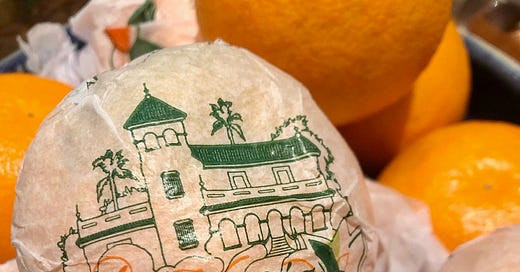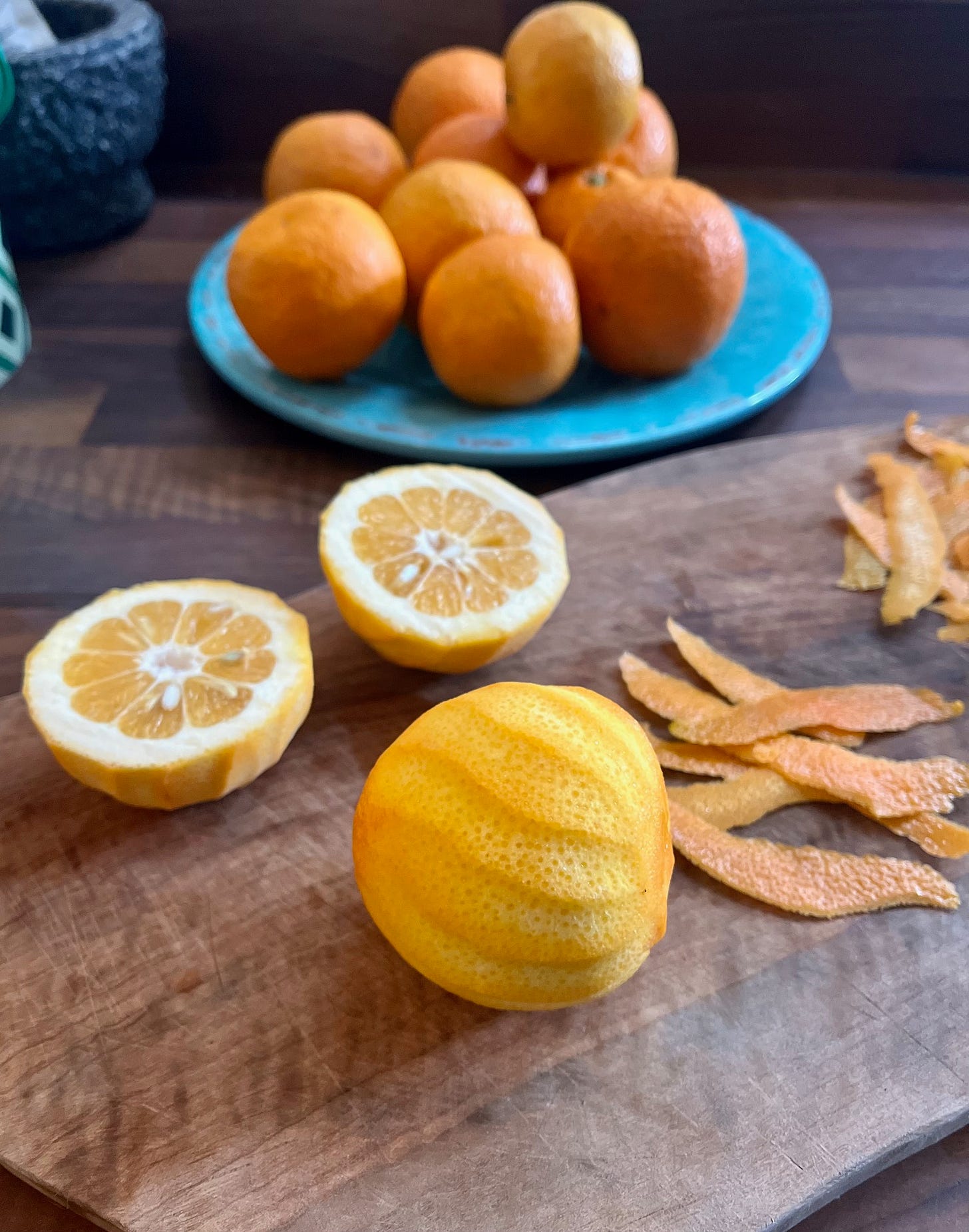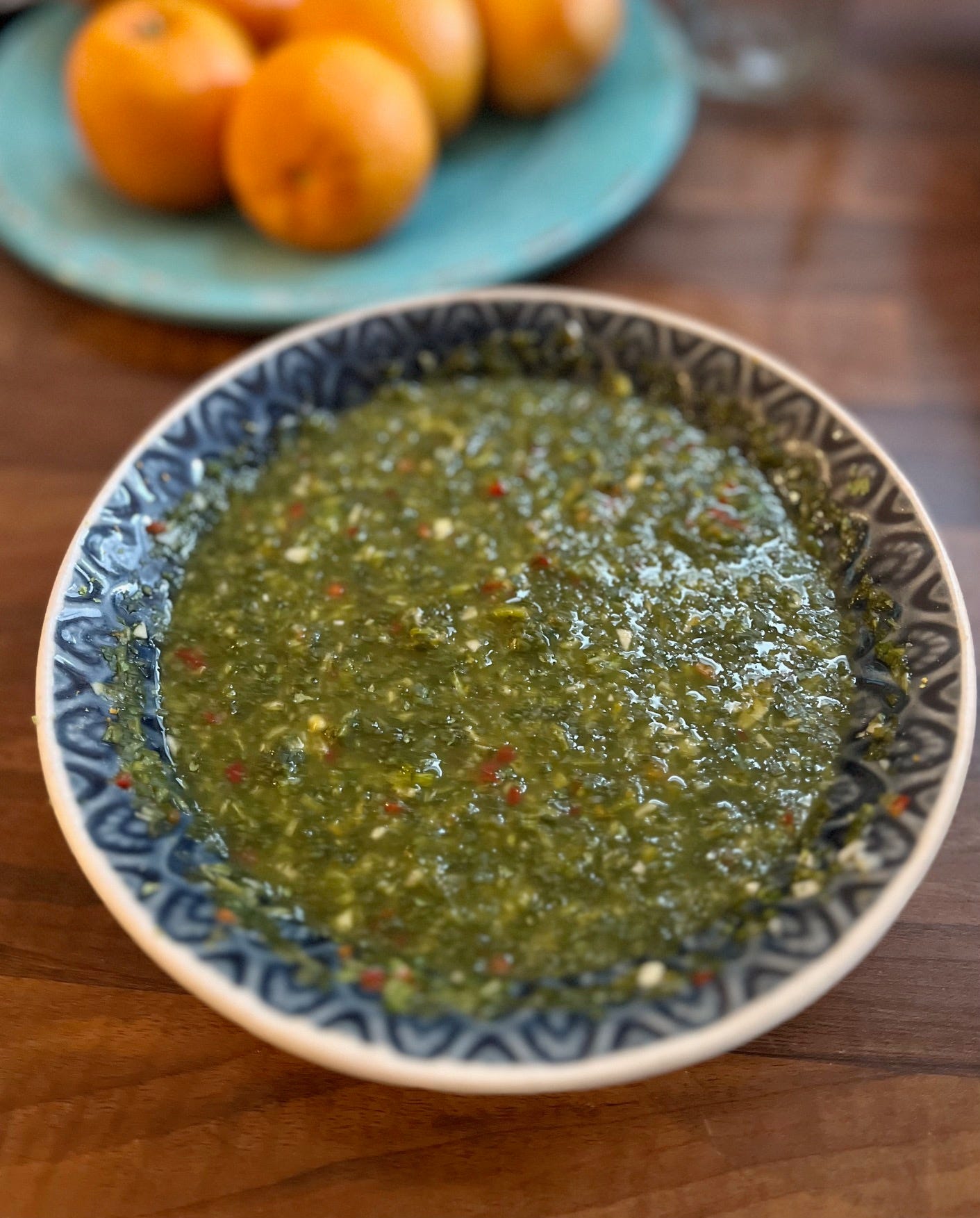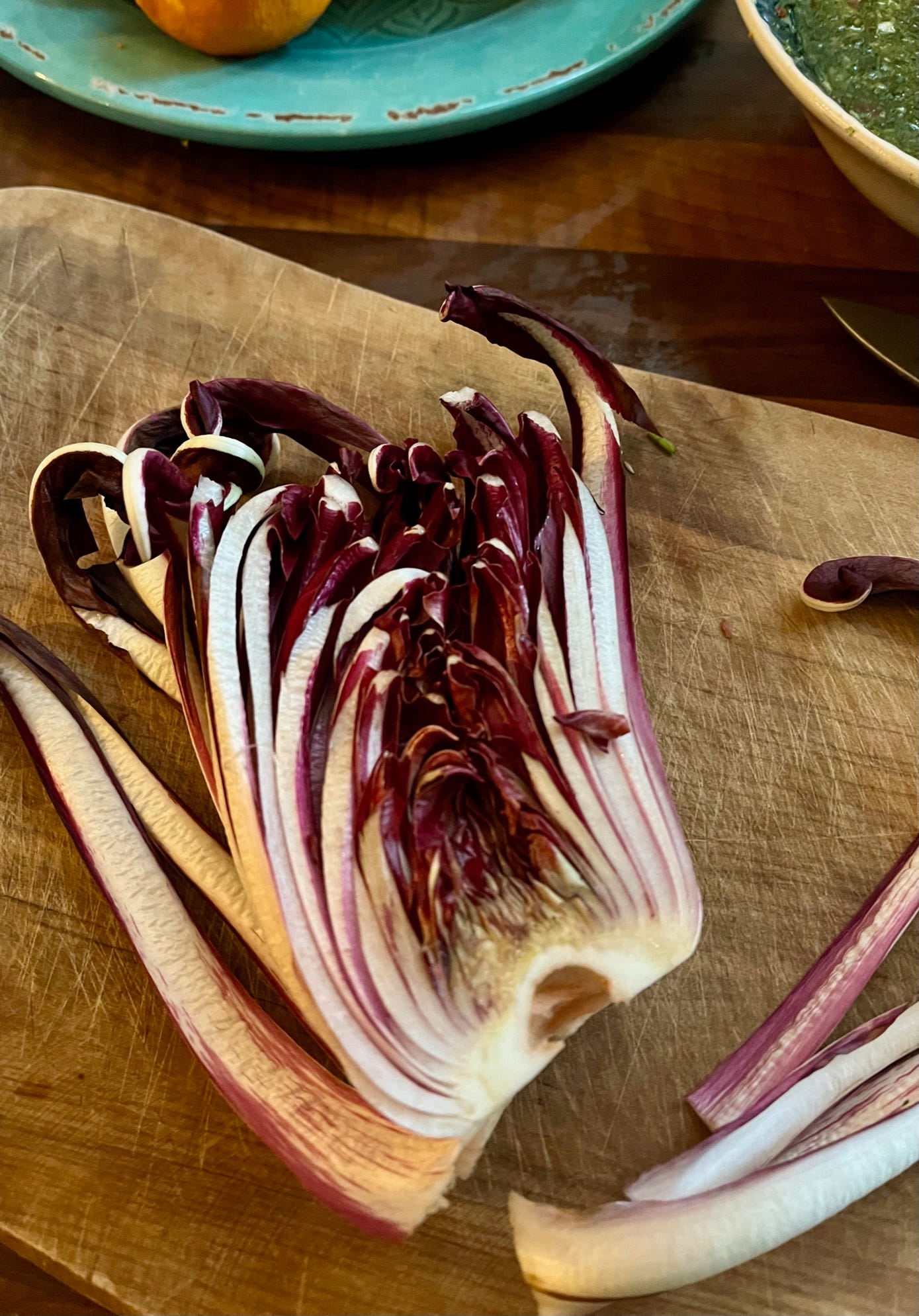I am not going to give you a recipe for marmalade today. I do love Seville orange marmalade, but I only need to make it every 2-3 years because we don’t eat masses of it. Plus, it is one of those things that people give to me, knowing how much I love all things citrus. I am always grateful for these gifts, not least because although I am happy to make marmalade, there are about a million other things that can be made with Seville oranges which are all faster, less faff (and let’s face it, less sticky).
If you are making marmalade this year, there are recipes - yes recipes, as I give you 2 methods - in Modern Pressure Cooking. Pressure cookers help speed up the process whichever method you use because they soften citrus so quickly and efficiently. And you also need less water.
In the UK at least, Seville oranges do seem to be all about the marmalade, but they are good for so much more. You can use them in the same way you might use lemons and limes, in both sweet and savoury dishes. Staying with preserves for a minute, you can make excellent Seville orange curd in the pressure cooker, and you can make candied peel (as I describe here). You can also use their zest and juices in your baking and desserts.
Then there are the drinks. I always freeze as much juice as I can manage every year, because it is a vital ingredient in my rum punch recipes and I always want rum punches in summer, not winter. You can use them to make vin d’orange (my friend Jenny Linford describes how to do so here), and then sticking with rum, there is the 44 Cordial – a wonderful combination of Seville oranges, coffee beans, sugar and rum. There is a recipe for this in Citrus, but in brief, you take a couple of Seville oranges (a sweet orange is traditional, but I prefer the flavour of Seville orange zest), pierce all over and stuff with 44 coffee beans. You then put in a large preserving jar, sprinkle over 44 tsp of sugar (which equates to around 250g), then add a litre of rum, I use golden. Leave to steep for 44 days, then decant into clean bottles. If you leave it any longer, it becomes too bitter. So random, but it really works. You can also add different spices, use your favourite spiced rum, make it with just orange, no coffee….endless possibilities and so easy. And as there will be plenty of flavour left in the oranges afterwards, you can use them again - amongst other things, they make a very fine marmalade.
But now onto savoury recipes, which is where I think they Seville oranges shine. They make the best proper duck a l’orange, and are wonderful as the sour element for ceviche. The first thing I always do when I first buy them is make a batch of quick preserved orange – much nicer than using sweet oranges as the zest has a much more pleasing fragrance and flavour. Simply pare the zest off 4 oranges and juice them. Put in your pressure cooker with a teaspoon of salt. Bring up to high pressure, cook for 2 minutes, then leave to drop pressure naturally. You will find the skin has softened and the liquid will have become syrupy. Both zest and liquid are very useful! Decant into a jar and store in the fridge – they will keep indefinitely. Use in the same way you would use preserved lemons. I am in the habit of frequently caramelising bitter leaves at this time of year for a quick lunch, and one of the ways I like to eat them is by dressing with some of this preserved zest and making a dressing with some of the syrup. I like to add dollops of goat’s curd too. I also use it to dress crisp salad of finely sliced fennel with a bitter leaf element, or a carpaccio of al dente beetroot or celeriac or raw Jerusalem artichoke - or all three roots together. With a bit of toasted hazelnut for crunch.
The next thing I will do is make blanched zest for the freezer or store cupboard. Pare off the zest and shred it, not too finely (you can leave some pieces whole if you prefer). Put in your pressure cooker. Cover with water, no salt this time. Bring up to high pressure and remove from the heat. Leave to drop pressure naturally. Taste for bitterness and repeat if you think it is necessary. Then you can either open freeze it before transferring it to a freezer container, or you can dehydrate it in a very low oven or a sunny (?!) windowsill. This is similar to the bags of dried, shredded orange peel available in Middle Eastern shops and is useful for adding to bouquet garnis and for adding flavour to all kinds of dishes – I really like with rice, probably with a few drops of orange blossom water too.
Now for today’s recipe proper:
Halloumi with a Seville Orange, Chilli and Coriander Sauce
There are some recipes or flavour combinations which stay with us forever. One of the ones I always cook several times during the Seville orange season is this one – I look forward to it every year and rarely change the actual sauce element, but vary what I put it with a lot. It comprises Seville orange, chilli, coriander and garlic and I guess is a variation on mojo sauce, another good one. I sometimes throw a bit of lime in too. This sauce goes back a long way with me. Years ago Elizabeth Lambert Ortiz’s books on the Caribbean and South America travelled through the Caribbean with me and I cooked extensively from both. I swear by her mutton curry in the former and her recipe for Seco de Carnero, a Peruvian lamb stew, from the latter. (As an aside, there are four versions of stuffed giant (4lb! ) Edam, from Curacao, which I have always wanted to try. You can buy one for around £20, I wonder if I should?) Back to my recipe - the coriander, chilli and garlic are pureed together, then cooked with sour orange juice, lamb, peas and potatoes. I adapted it for my first pressure cooker book and it proved to be one of the most popular recipes.
The dish works so well because the sauce cuts through the fattiness of the lamb; the slightly combative nature of the sauce in turn is tempered by the sweetness of the peas and potatoes. This is one of those times when you want to stew the peas so they are super soft and sweet – think of the sort you get in tins or jars, continental style, rather than the bright green of the fresh or frozen. Yes, they look a bit sludgy after the cooking time, but the flavour makes it worth it, and the sauce adds all the vibrancy you need.
The lamb version is excellent – one of my favourite things to eat, but there is no getting away from the fact that even neck fillet, on or off the bone, is very expensive these days, so I often look for cheaper options too. Last week I made it with chicken livers (organic chicken livers are one of the few organic cuts still relatively cheap), searing the chicken livers separately, cooking the sauce with the potatoes and peas and then adding the chicken livers just to heat through at the end. Then earlier this week I made it again, this time with halloumi. I really love what happens to halloumi when you bake it – it doesn’t melt, just softens to a very comforting squidginess.
If you want to make this out of season, I suggest either freezing Seville orange juice and zest, or replacing the Seville orange with a mixture of sweet orange and lime. The other thing I do is I make double of the chilli/garlic/coriander/orange zest combination, add enough water or juice to make a loose paste and add at teaspoon of salt. This is packed into a jar and left in the fridge. It ferments very gently, along the same lines as yuzukosho and can be used as a condiment and flavour enhancer for all kinds of things. I really love it in a cheese toastie!
Ingredients:
For the sauce:
8 garlic cloves, peeled
1 large bunch of coriander (around 100g), roughly chopped
1-2 chilli peppers depending on sort and how hot you want it (I usually use 1 large scotch bonnet)
Zest of 2 Seville oranges
For the rest:
2 tbsp olive oil
1-2 blocks halloumi, sliced (depending on appetite)
1/2 tsp dried mint (optional, I like the powdery sweetness)
2 red onions, sliced into slim wedges
750g waxy potatoes, sliced
500g peas, frozen best this time of year
250ml sour orange juice
First make the sauce. Do this in 2 stages. Finely chop everything together (by hand or in a food processor), then remove a few spoonfuls to use as a gremolata to finish off the dish. Add a little water to what you have left and continue to process to a puree.
Heat 1 tbsp of the olive oil in a frying pan and sear the halloumi on both sides. This is optional, but I like it lightly browned. Sprinkle with the mint and set aside.
Heat your pressure cooker and add the remaining olive oil. Add the red onions and sear briefly on each side, then stir in the potatoes and peas. Mix the sour orange juice with the puree and pour this over the contents of your pressure cooker. Stir to make sure the base is deglazed and add 100ml water. Season with salt and pepper.
Arrange the halloumi on top and close the lid. Bring up to high pressure then adjust the heat so it is just high enough to maintain the pressure. Cook for 6 minutes, then leave to drop pressure naturally. This is slightly longer than the potatoes usually need, but the orange juice is a bit of an inhibitor, plus the sauce needs the cooking time to mellow a bit.
Sprinkle over the reserved gremolata and serve.
And finally….
My pressure cooker usage over the past week has included….
Seville orange preserving as described above!
Refreshed some bread and made batch of chorizo/caper/olive bread puddings for the freezer – I made 4 and froze them uncooked, ready to be pressure cooked from frozen
A ham, with split peas cooked alongside for soup
A sausage and egg curry
Coconut brown rice
Caramelised Treviso tardivo, with blood orange juice and preserved Seville orange
Greens x a million
For the thermoses:
A savoury rice made with leftover brown rice
Several pastas
A smoky chicken and sweetcorn risotto
There may be an extra post tomorrow, as it is Burns Night and we love haggis here….and of course, you can pressure cooker it! With the neeps and tatties alongside too!








Quarante-quatre! I make the French version with fruit preserving alcohol if in France, vodka if in UK, instead of rum. Those knobbly brown sugarlumps. Mayyybe an exhausted vanilla pod. Love it so much, thank you for introducing me to the Spanish version!
I'll be making that preserved orange today, thanks!
I recall that you mentioned using the pressure cooker to make candied orange peel, but I forget where I saw it. Would you share again please?